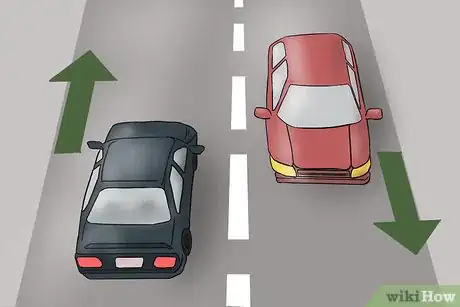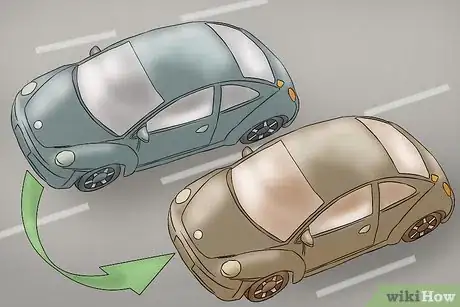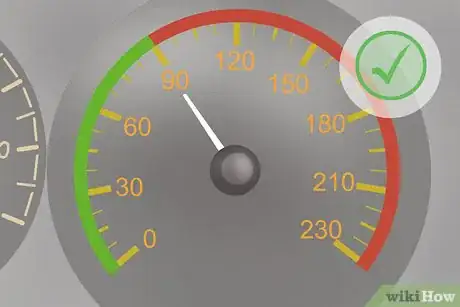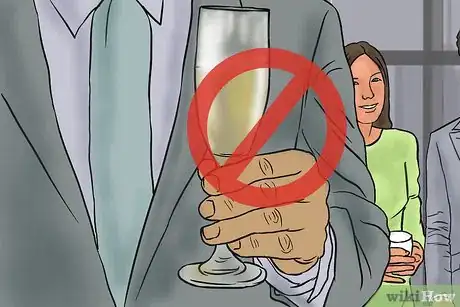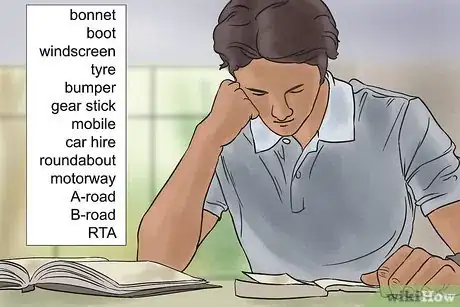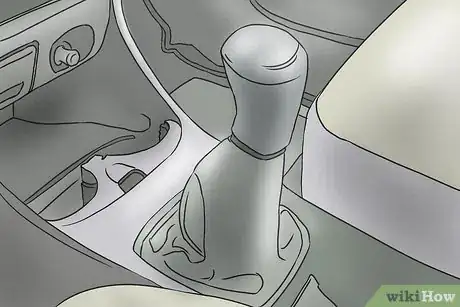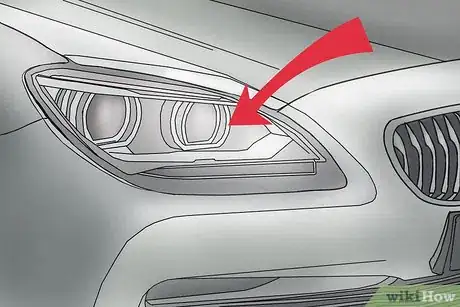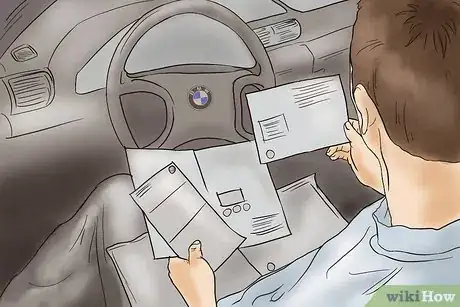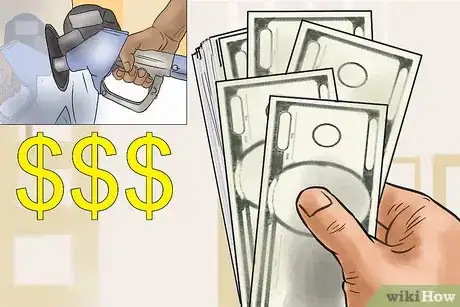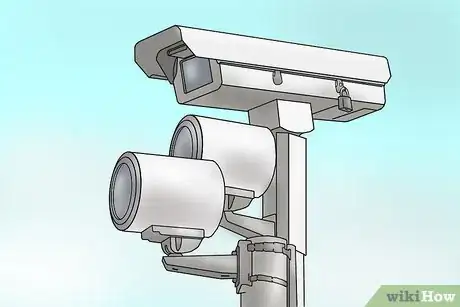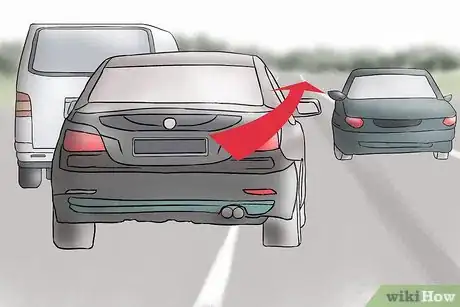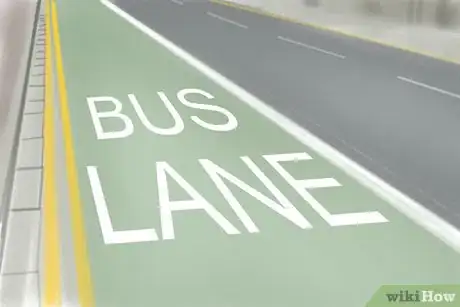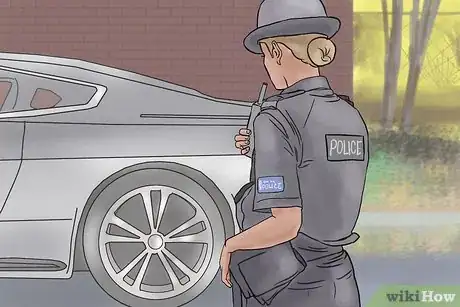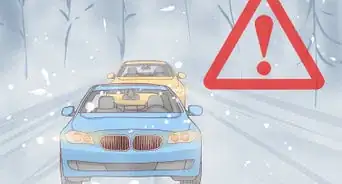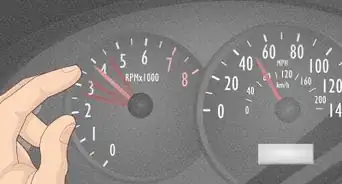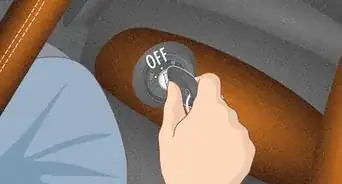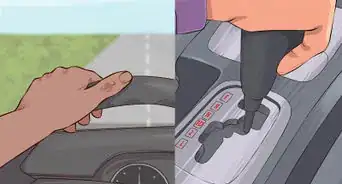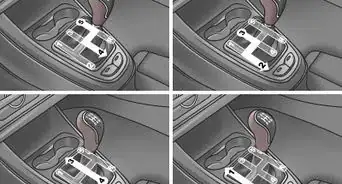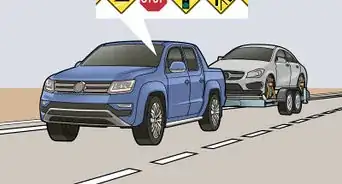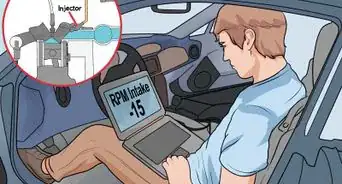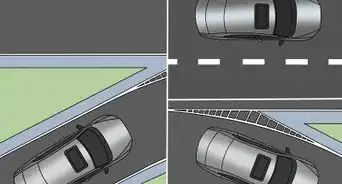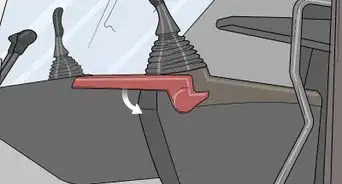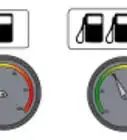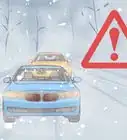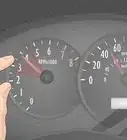This article was co-authored by Jacqueline Regev. Jacqueline Regev is a Driving Instructor and the Founder & CEO of Bubble of Safety Driving School. With over 20 years of education experience, she specializes in encouraging people to develop their skills to become safe and courteous drivers. Jacqueline earned a Bachelor's Degree from UCLA and an MA from Chapman University. She is also pursuing a PhD from UC Santa Barbara.
There are 13 references cited in this article, which can be found at the bottom of the page.
This article has been viewed 221,985 times.
Renting a car in the UK soon and not sure what the rules of the road are? No problem! If you feel comfortable driving in your own country, chances are you'll adapt to the UK quickly once you're aware of their (probably very similar) rules of the road. In this article, we'll show you the most important driving laws, car features, and safety precautions you need to know. Let's get started!
Steps
Rules of the Road
-
1Remember to drive on the left side of the road.[1] If you drive on the right you will likely involved in a serious collision, or killed, and will be arrested for dangerous driving which is a criminal offense and may end up with a custodial sentence.[2]
- Know the local laws, street signs, and speed limit.
- Practice in a safe beginner space.
- After you are familiar with the different visibility and turning radiuses required when making turns whilst driving on the left side of the road, you can start driving on busier roads.
-
2Always give way to the right, not the left like in the USA or continental European countries.Advertisement
-
3Don't speed. The speed limits on the motorways are 60mph (96km/h) for goods vehicles over 3.5 tonnes, 60mph (96km/h) for buses and coaches and 70mph (112km/h) for cars. Be aware that although punishments aren't set until you break the 10 percent rule, 1 kph or mph over the speed limit is legally considered speeding and can warrant a law enforcement officer to pull you over. 35 mph (56 kph) in a 30 mph (48 kph) zone is considered high enough to warrant a £100 fine automatically, while 75 mph (121 kph) in a 70 mph (113 kph) zone is not; but this doesn't mean a fine is not possible. [3]
-
4Never drink alcohol, or use drugs and drive. The UK has very strict drink and drugs regulations and many police officers pull over cars to carry out drink and drug tests on random drivers. The view of the police and the courts is that alcohol immediately makes you guilty in an accident, even if it was not your fault. Refusing to provide a breath or urine sample when asked to do so is an offence itself, and will result in your arrest.[4]
Understanding UK Car Features
-
1Learn the language. "Bonnet" means the hood of the car, "boot" means the trunk, "windscreen" is windshield, "bumper" means bumper or fender, "gear stick" is known around the world as gear shift/gear lever, "mobile" is a term for cell phone, "car hire" is car rental, "roundabout" is rotary or traffic circle, "motorway" is a multi-lane expressway, "A-road" is a major road while "B-road" or "C-road" is a minor road, "RTA" is short for "road traffic accident", "slip road" is the ramp leading on or off a motorway. "Single carriageway" is where all the asphalt of a road touches so that no lanes, whether traveling together or opposite, are separated. "Dual carriageway" is a road with both sides of traffic separated by land or space. Make sure you know what these mean before driving on UK roads. More terms can be explored on Wikipedia's "Glossary of road transport terms" page.
-
2Remember that the majority of cars in the UK are manual transmission.[5] If you cannot drive a manual car, you will have to hire an automatic car because you will not be qualified to drive or insured to drive a manual car. If you have an accident whilst driving a manual that you cannot operate, you may be arrested for dangerous driving which can result in a heavy fine and maybe a custodial sentence.[6]
-
3Make any necessary modifications to your headlights to adjust the beam to avoid dazzling oncoming drivers if your car is from a country that normally drives on the right side of the road. Often, there are adhesive or static shields that can be applied to the headlamps. Some cars even have a simple mechanism under the bonnet for adjusting the beam pattern.[7]
-
4Know the legal requirements. Check with the police about any legal requirements for driving your car/truck in the UK as this can vary for different types of vehicles. Always make sure you have the correct motor insurance policy, failure to do so will result in your vehicle being seized and you being arrested. Make sure the vehicle is road legal to UK standards, failure to do so will void any insurance policy and result in the vehicle being seized.[8]
- If driving a friend's vehicle always get their permission and check your own insurance policy to make sure you are permitted to drive other vehicles.
-
5Consider the cost of fuel. Be aware that fuel prices in the UK are almost three times higher than in the USA, and hiring a car may also cost more.
Safety Considerations
-
1Be aware that the UK has speed cameras with automatic number plate recognition. These can be fixed cameras, parked speed-catching vans, or cameras known to be fixed to most police vehicles. Automatic systems in police cars can also confirm whether or not the vehicle is insured or not.[9]
-
2Think before overtaking. Know that overtaking on motorway or dual carriageway on the inside (known as undertaking) is not illegal, however it may be a valid reason for you being stopped by either an unmarked police car or a police car with decals.[10]
- In the UK, the left hand lane is considered the "slow lane" and some drivers may pull over without checking properly which can cause an accident.
- Be aware that using the hard shoulder of a motorway to undertake vehicles will also result in a possible arrest.
-
3Watch for bus lanes. Be aware that in some cities, there are bus lanes (Indicated by road signs, the words "BUS LANE" in large letters across the road, and occasionally the tarmac will be colored red). Only public buses and emergency service vehicles are permitted to use this lane (taxis, motorcycles, bicycles can if sign posted) at the times that are displayed. Outside of the hours of operation, anyone can drive in the bus lane. Anyone else will be photographed (automatic cameras) and fined £60 for using this lane when the bus lane is in operation. (Approximately $100 USD).[11]
-
4Wait for instructions before doing anything if you're stopped by the police. Always do as you're told without a bad attitude and never assume that if you are polite you will get off any offense you have committed. Always provide ID when asked.[12]
- You should always carry a valid drivers licence and proof of vehicle insurance when you drive. It is a criminal offense to refuse or give false details which will result in arrest.
- Unlike in the USA and maybe other countries, the UK police do not need permission or a reason to stop and search you, your belongings (handbag, rucksack or pockets) or your vehicle if stopped while driving. Do not attempt to stop them as you will be detained or arrested.
Community Q&A
-
QuestionDoes the driver sit on the inside of the road or on the outside of the road?
 Community AnswerIn the UK, the driver sits on the right side of the vehicle and we drive on the left side of the road. So you would be on the 'inside' of the road, just as in the US.
Community AnswerIn the UK, the driver sits on the right side of the vehicle and we drive on the left side of the road. So you would be on the 'inside' of the road, just as in the US. -
QuestionIs it legal to turn on a red light?
 Community AnswerNo. There is no equivalent of the US's turn on red. Under all circumstances, red means stop.
Community AnswerNo. There is no equivalent of the US's turn on red. Under all circumstances, red means stop. -
QuestionAs a visitor to the country, do I need to obtain car insurance for a rental vehicle?
 Community AnswerBefore traveling, find out the rental requirements from the place you intend to rent your vehicle from.
Community AnswerBefore traveling, find out the rental requirements from the place you intend to rent your vehicle from.
Warnings
- Do not pull over and park at the hard shoulder, because it is for emergencies only.⧼thumbs_response⧽
- If you feel sleepy whilst behind the wheel, open the window to allow cold air to blow in to keep you awake until you can find a safe place to stop and rest. If you are on a motorway, leave the motorway and park at a car park or service station to rest.⧼thumbs_response⧽
- Never drive if you are tired. The Highway Code recommends taking a break after every two hours of driving.[14]⧼thumbs_response⧽
References
- ↑ https://www.smartertravel.com/driving-on-the-left-side-of-the-road/
- ↑ https://www.sentencingcouncil.org.uk/offences/magistrates-court/item/dangerous-driving/
- ↑ https://www.gov.uk/speed-limits
- ↑ https://www.gov.uk/guidance/drug-or-alcohol-misuse-or-dependence-assessing-fitness-to-drive
- ↑ https://www.rac.co.uk/drive/advice/know-how/automatic-vs-manual-cars-which-is-better/
- ↑ https://www.sentencingcouncil.org.uk/offences/magistrates-court/item/dangerous-driving/
- ↑ https://www.popularmechanics.com/cars/a257/how-to-adjust-lights/
- ↑ https://www.gov.uk/legal-obligations-drivers-riders
- ↑ https://www.gov.uk/speeding-penalties
- ↑ https://www.gov.uk/guidance/the-highway-code/using-the-road-159-to-203
- ↑ https://www.nidirect.gov.uk/articles/bus-lane-penalty-charge-notices-pcns
- ↑ https://www.gov.uk/stopped-by-police-while-driving-your-rights
- ↑ https://www.gov.uk/browse/driving/highway-code-road-safety
- ↑ https://www.gov.uk/guidance/the-highway-code/rules-for-drivers-and-motorcyclists-89-to-102
